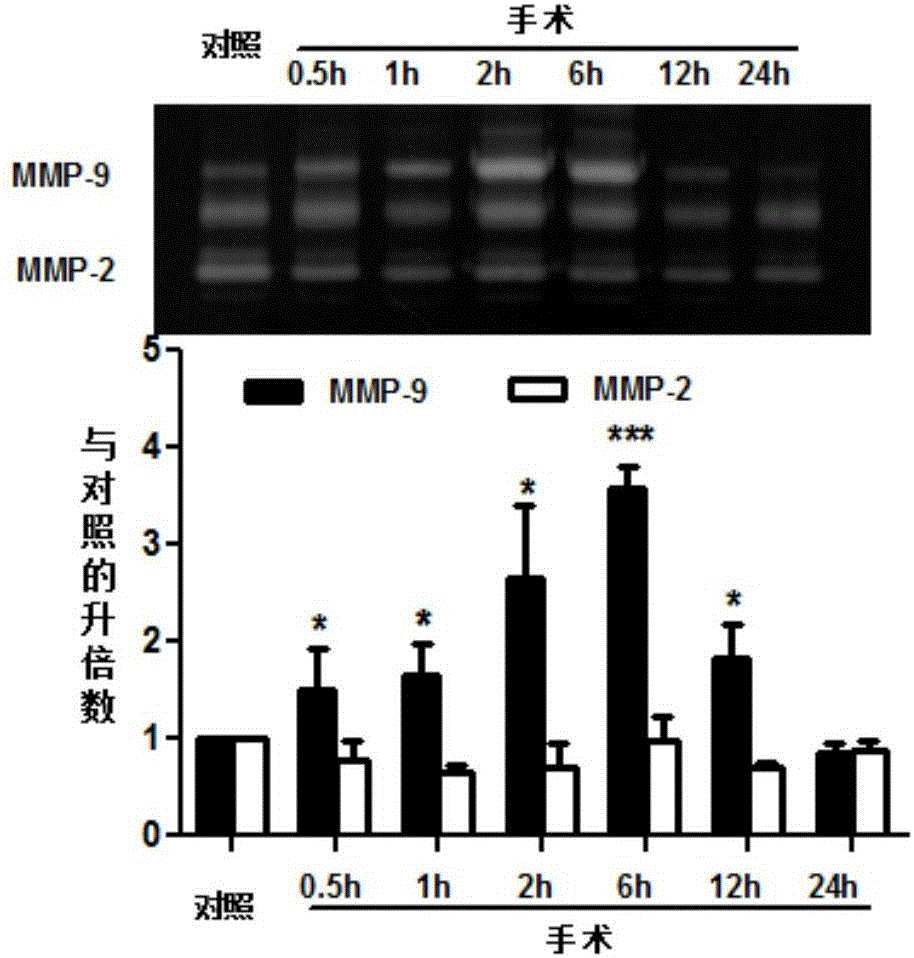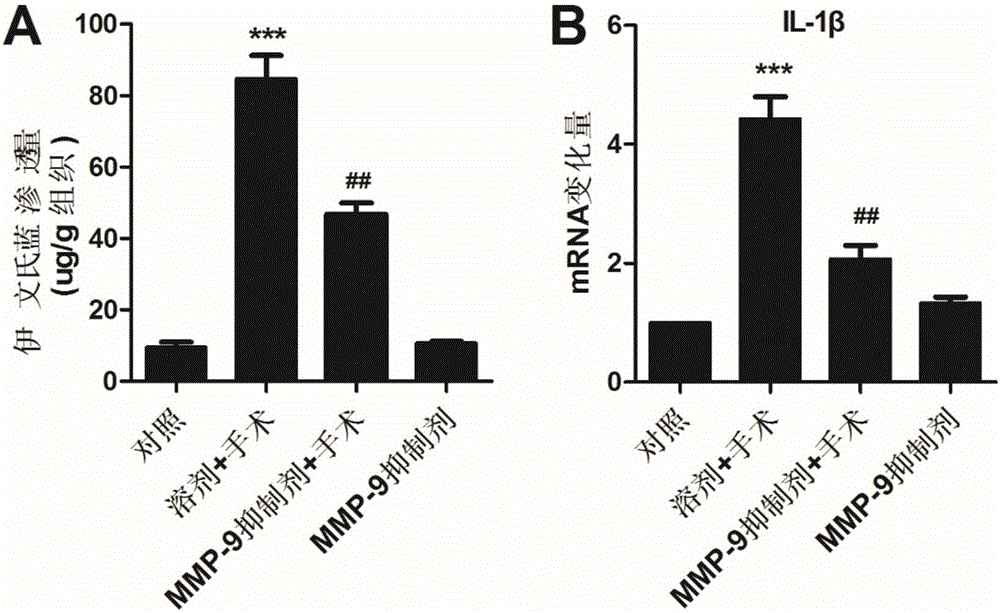Application of acetylcysteine in preparation of medicines for preventing and treating postoperative cognitive dysfunction and blood-brain barrier damage mediated encephalopathy
A technology of acetylcysteine and cognitive dysfunction, applied in the treatment of memory function after anesthesia and surgical shock, the field of new object exploration desire decline, to achieve the effect of rich sources
- Summary
- Abstract
- Description
- Claims
- Application Information
AI Technical Summary
Problems solved by technology
Method used
Image
Examples
Embodiment 1
[0039] It is reasonable to speculate that MMP-9 or MMP-2 may be an important factor that mediates endothelial cell damage in the process of PCOD and leads to the pathogenesis of POCD. In response to this speculation, the important role of MMP-9 and MMP-2 in the pathogenesis of POCD was demonstrated in detail in the early stage. The results of the experiment found that surgery and anesthesia trauma can trigger peripheral blood MMP-9, rather than MMP-2, to rapidly and strongly increase during the pathogenesis of POCD ( figure 1 ); and lead to the dysfunction of microvascular endothelial cells in the brain. Intravenous injection of MMP-9 inhibitors to mice in advance can significantly alleviate the decline in fear memory ability and new object recognition ability caused by surgical anesthesia trauma ( figure 1 ). This shows that the up-regulation of MMP-9 levels induced by anesthesia and surgery plays an important role in the impairment of cognitive function.
[0040] The spec...
Embodiment 2
[0050] N-acetylcysteine is a kind of mucolytic agent, and it can also be used as an antidote for acetaminophen. It is also clinically used for the treatment of renal idiopathic pulmonary fibrosis, chronic obstructive pulmonary disease and so on. More importantly, acetylcysteine has an excellent safety history, and its abundant cysteine residues have great potential for interfering with the "cysteine switch" in the activation process of matrix metalloproteinases.
[0051] Matrix metalloproteases contain a unique structure called a "cysteine switch". The cysteine switch consists of 2 key parts; one is the cysteine residue in the peptide domain, and the other is the zinc binding in the catalytic domain location. When cysteine residues are modified by S-nitrosylation, oxidation, and alkylation, they will dissociate from the cysteine residues at the zinc binding site, resulting in the activation of matrix metalloproteinases. Therefore, modification of cysteine ...
Embodiment 3
[0065] Animals were subjected to intravenous injection of MMP-9 inhibitors to determine the effects of surgical anesthesia trauma on blood-brain barrier permeability and hippocampal IL-1β levels in mice. The experimental results showed that compared with the simple surgical trauma group, the surgical Pre-injection of MMP-9 inhibitors can significantly reduce the leakage of the blood-brain barrier and the increase of hippocampal IL-1β levels in surgery-induced mice.
[0066] The specific test content is as follows.
[0067] a) Test animals:
[0068] Healthy male C57BL / 6J, 12-14 3-3.5 month old mice, clean grade. The experimental animals were raised in an independent environment with 12h-12h alternation of day and night, the room temperature was maintained at 24±2°C, water and food were free to drink, and the experiment was carried out after 1 week of adaptation to the environment.
[0069] b) Drugs and reagents
[0070] DMSO, Inc., method of formulation; MMP-9 Inhibitor, Inc...
PUM
 Login to View More
Login to View More Abstract
Description
Claims
Application Information
 Login to View More
Login to View More - R&D Engineer
- R&D Manager
- IP Professional
- Industry Leading Data Capabilities
- Powerful AI technology
- Patent DNA Extraction
Browse by: Latest US Patents, China's latest patents, Technical Efficacy Thesaurus, Application Domain, Technology Topic, Popular Technical Reports.
© 2024 PatSnap. All rights reserved.Legal|Privacy policy|Modern Slavery Act Transparency Statement|Sitemap|About US| Contact US: help@patsnap.com










